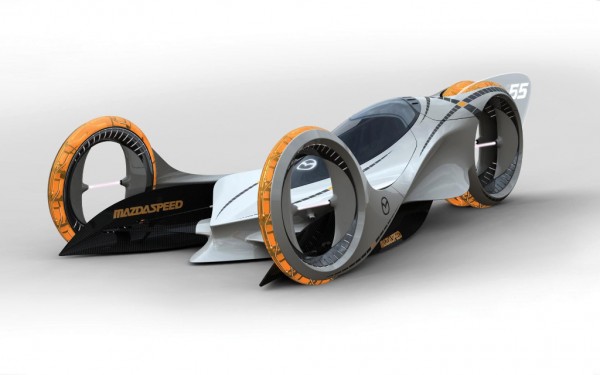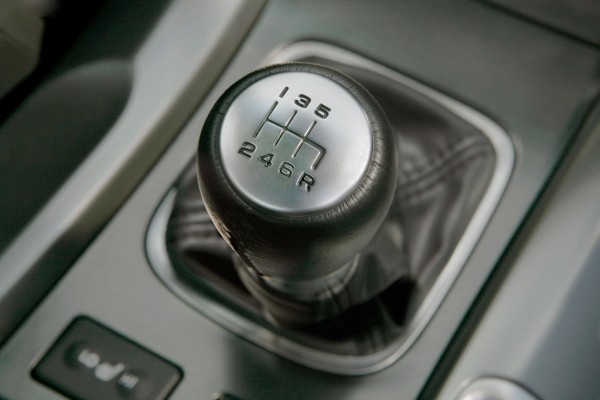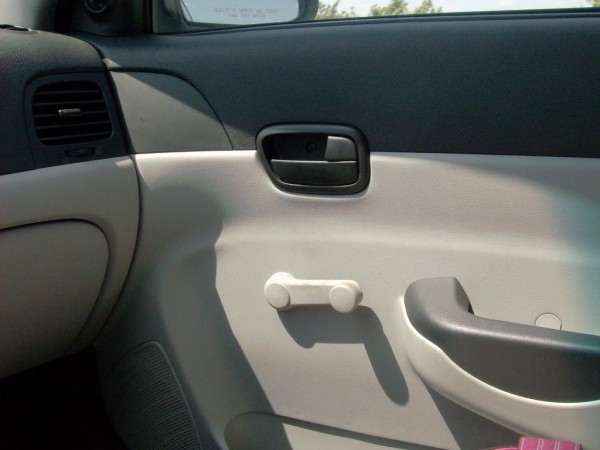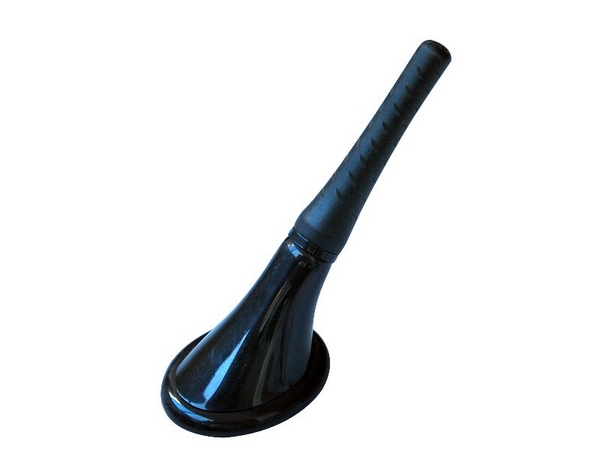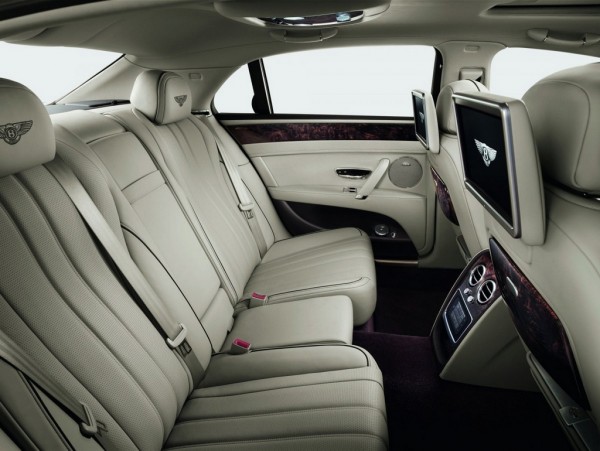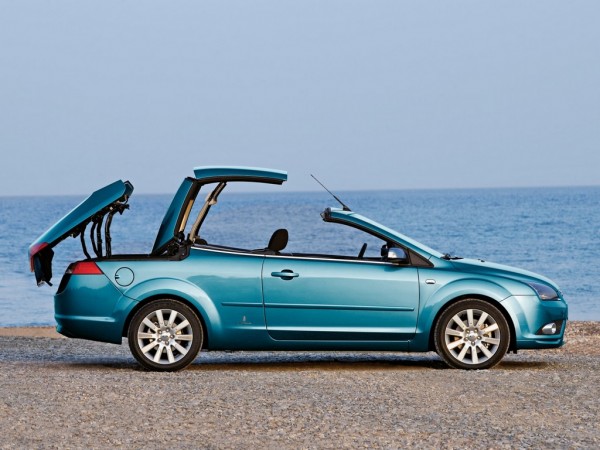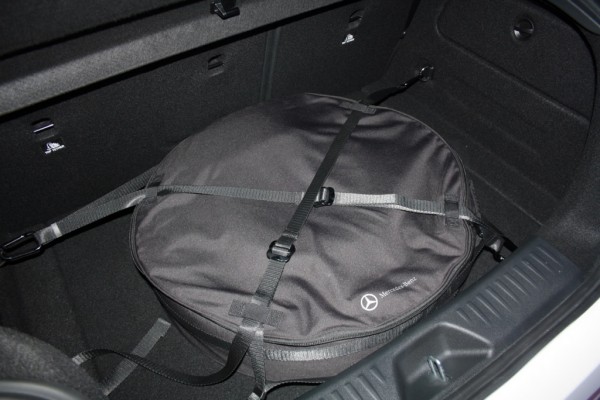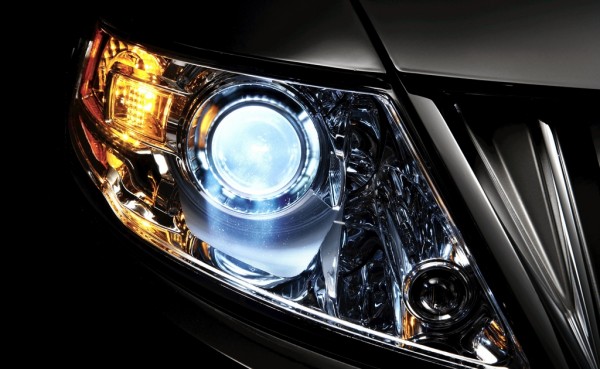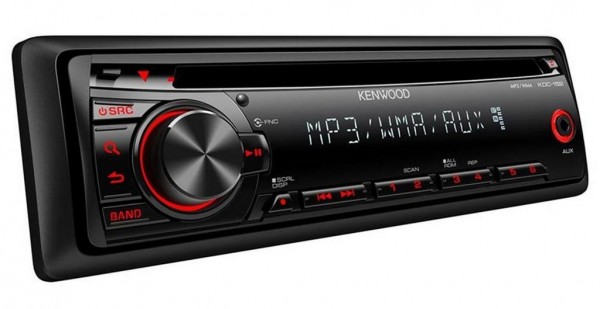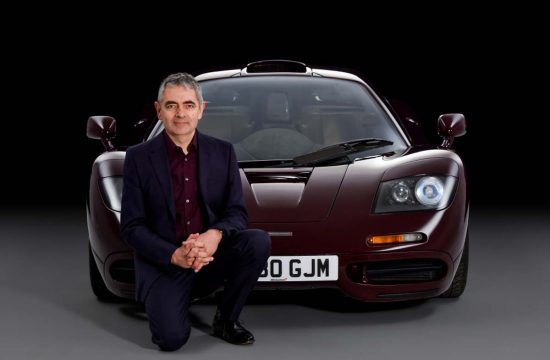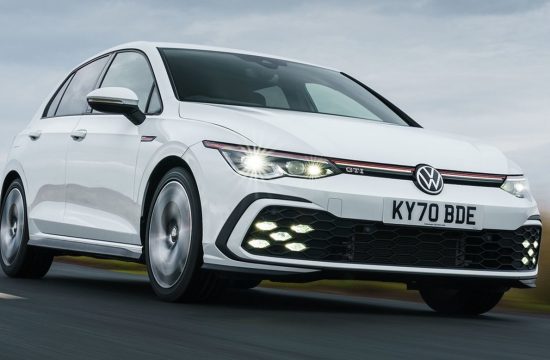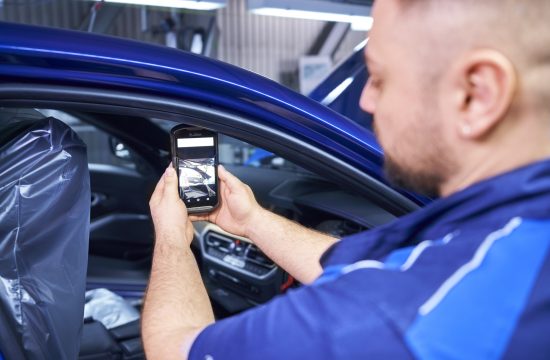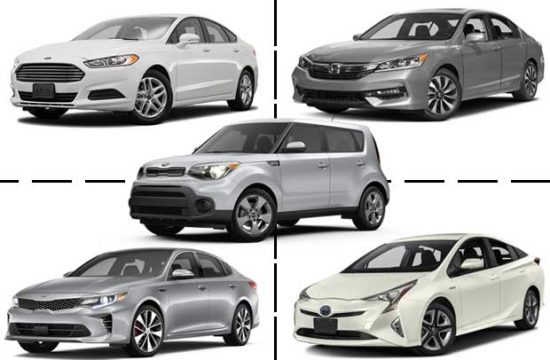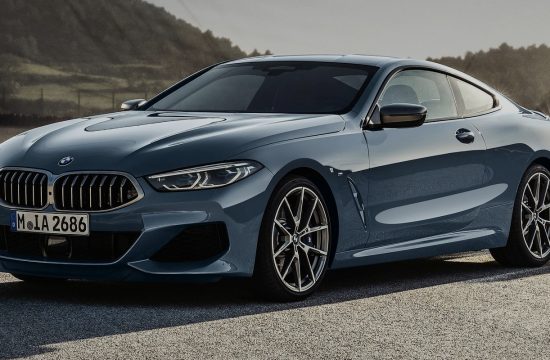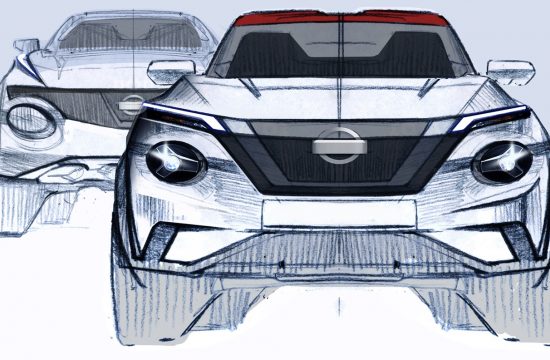Like the entire world, the car industry is also evolving. New systems are being invented or adapted for car use all the time and, whether we like it or not, this means that many features we are so used to will soon be history. The carmakers are doing all they can to draw attention to their models and technology has already reached an incredible level.
Almost all of these systems are designed to make life inside the car easier or more pleasant and that’s why some things just had to go. For example, when was the last time you listened music from an audio CD instead of a flash drive or your iPhone or iPod? Or when was the last time you saw a car with a retractable (telescopic) antenna? Yes, it’s sad to see these go, especially for older drivers who grew up using them, but the new stuff is absolutely amazing.
So let’s take a look at top ten features our children will think of as “antics” or will probably not even remember when they’ll be old enough to drive.
The manual gearbox
The transmission is one of the most important parts of any car so it’s easy to understand why carmakers have always invested a lot of time and money in having the best transmission available at the time. The first century of the automobile history has been dominated by the manual transmission. From the most basic variants to highly advanced versions, the manual transmission’s way of use has basically remained unchanged.
However, in the 50s, the automatic transmission was developed and it became extremely popular, especially in North America. In the rest of the world, it took decades before people started buying cars with an automatic transmission and they were right, because for a long time, this type of transmissions was inferior to manual ones, offered less performance, were less reliable and were generally not seen as “manly” enough as manuals. For example, in Europe, only 20% of new car buyers were opting for an automatic transmission. However, with technology getting better and better, automatic transmissions significantly improved and became more popular. First there were some markets, like Asia and Australia, where people started buying more and more cars equipped with an automatic transmission starting with the early ‘90s and then the rest of the world followed, especially Europe, starting with the early 2000s.
And this happened for several good reasons. First of all, automatic gearboxes are a lot easier to learn and to drive. You push the brake pedal, put it in Drive and you’re good to go. On the other hand, things are a little more complicated with the manual, where you have to use the clutch and change gears all the time. Actually, in many countries, you’re not allowed to drive a manual if you got your driving license on an automatic.
For many years, manual transmission fans have argued that automatic gearboxes are not as fuel efficient as manuals and also don’t offer the same performances. But with the development of modern automatic transmissions, that have seven, eight or even nine speeds and features like double-clutch or gearboxes like the Continuously Variable Transmissions (CVT) used especially by Japanese carmakers, these claims aren’t valid anymore. Modern automatic gearboxes change gears a lot faster than any human can and are so advanced that they adapt to each one’s driving style for the best fuel economy. For example, believe it or not, the automatic Porsche 911 is more fuel efficient than the manual one by as much as 1 liter per 100 km (around 3 MPG).
Right now, most carmakers offer customers the possibility to choose a type of transmission for all of their cars, but there are already a few cases where certain models are only available with an automatic transmission (like the new Renault Clio RS or the Fiat 500L in the United States). And, whether we like it or not, this can mean only one thing. That slowly, manual transmission will get more and more uncommon until one moment when they’ll become extinct on new cars.
The classic car key
There was a time when all a car key did was open the car. You had a piece of metal that you put in the door lock, rotate it left or right and that was it. But things changed in the past decades, for two reasons: safety and accessibility.
Almost all new cars come with an electronic key and with most of them all you have to do is push a button and the doors open. Of course, to start the engine you still have to use it the traditional way to start the ignition, but there are already a lot of carmakers offering Start buttons or keyless entry systems. Start buttons mean you don’t have to rotate anything, just insert the key in a dedicated slot, push a button and that’s it, the engine start.
The first time an electronic key was introduced on a car was in 1982, when the Renault Fuego became the first car to come with this option. Other models were later available with it, but the system became popular in the early ‘90s, when General Motors decided to make this feature standard. People loved it because it was easier to use and you avoided problems like freezing locks. It was also safer, because technology became more and more advanced, and car manufacturers started implementing chips in the electronic keys, that made ignition impossible without the key.
1998 also saw a new innovation in car access systems, the “Keyless Go” system introduced by Mercedes Benz on the S-Class. Using a small radio transmitter placed inside the key and several antennas integrated in the car’s body, the S-Class was capable of detecting when the driver was near and automatically unlock the doors. Since then, the technology started being used by more and more carmakers, first the luxury ones, and recently this system has been made available on more affordable cars too.
Looking at all these and seeing how electronics play a more and more important role in the car industry, it’s safe to say that the time when traditional keys will be gone is near. Perhaps not in the near future, but they will be gone.
Manual windows
The Packard 180 was the first production car to be available with power windows, in 1940, followed by Ford with the Lincoln Custom in 1941. In the beginning, these systems weren’t designed to be used for windows, but instead were developed as a solution for raising or retracting roofs of convertible models. Following the major technological progress that happened during World War II, Buick started using an advanced electrically controlled hydraulic system on its convertibles starting with 1946, becoming standard a year later. Customers were amazed, because they were able to open the windows and lower the roof just by pushing a button.
For decades, this was seen as a more premium feature, but these days, it’s pretty difficult finding a new car that doesn’t offer power windows. The times when you worked out your biceps each time you had to open the windows are almost gone, because power windows come as standard for almost all new cars on sale right now. It’s true, manual windows are still being offered by some carmakers on their entry level models, while others are offering power windows only for the front windows. Actually, come to think about it, I think this feature is already half extinct and it won’t be long until crank handle manufacturers will go out of business.
The radio antenna
Remember those classic power antennas? Some were automatically raised when you started the car, others you had to manually take them out. The automatic ones were a lot more popular, because they retracted almost completely and thus were a lot harder to steal. The first time a power antenna was used was in the ‘50s, when Cadillac offered it as a luxury feature on some of its models. The system was quite advanced and the antenna was raised or lowered when the radio’s volume control was pushed or pulled. The first automatic antennas were introduced in the ‘70s and were automatically raised when the engine was started or the radio was turned on and then automatically lowered when these were turned off.
Well, these are history since long ago and today’s cars no longer have long antennas and in the meantime have been replaced by smaller ones usually mounted somewhere on the roof. Also, it looks like there’s a recent trend for carmakers to integrate the antenna in different body elements, such as the famous “shark fin” on all BMWs. Other carmakers completely removed any hanging antennas and instead integrated them in different glass elements of the car.
Hand brake lever
The hand brake was initially introduced as an emergency brake in case of main brakes failure and operated on the rear wheels, which lost more traction than the front ones during braking. However, once cars became larger and more powerful, the handbrake was pretty much useless for these types of situations, not to mention that braking systems these days are extremely reliable and only fail in extreme and isolated circumstances. So what the hand brake was mostly used for was to prevent the car from moving while being parked, that’s why most people call it the parking brake. Many countries actually enforce using the parking brake when the car is parked and leaving the car in first gear (for manuals) or in the Parked position (automatic transmissions) and drivers can actually get in a lot of trouble if the car isn’t properly immobilized and rolls off damaging something or someone.
One other thing petrol heads all over the world use the hand brake for is having a lot of fun. Everyone knows what happens when you pull the hand brake after steering left or right. Of course, you have to know what you’re doing, especially if you want to show off, but handbrake turns, when performed properly are extremely fun. Unfortunately, the times when we won’t be able to do anything like this on a new car are close. And that’s because many manufacturers already started using buttons instead of the traditional hand brake lever. The system was used for the first time by BMW, on the 2001 BMW 7-Series and similar systems have since been developed by most large carmakers like Volkswagen, Renault, Subaru or Jaguar. It’s true, right now most of these systems are only used on more expensive models, but if there’s one thing car history taught us is that from “exclusive” to “for everyone” is just a small step. Not to mention that there are already some systems that removed any buttons or levers completely, so the driver doesn’t have to do anything and that’s because the hand brake is applied when the engine is stopped and is released when the throttle pedal is activated.
Fixed back seats
There was a time when the back seats where just that, back seats. A bench or several seats strapped to the floor that had only one purpose, to carry two or three passengers. If you had to carry something large and had no option but to use your own car, good luck. You needed it. Luck and a lot of work, to remove all those screws, get the seats out of the car and put them somewhere until you finished carrying what you had to carry. That was in the fortunate circumstances when your car allowed that.
But at one point, carmakers stopped for a second and thought what it would be like if you could seriously increase cargo space without requiringhalf a day to do something that could’ve been done in a couple of minutes. And this is how the folding rear seats were born. In the beginning, systems were pretty hard to use and were only available for a handful of models. But with people looking more and more at practical and “multi-tasking” cars, carmakers were forced to put this feature more or less standard on almost all of the models in their lineups.
But today, just like the power windows, everyone sees folding back seats as something every car should have. More than that, in their quest for bigger sales, manufacturers developed different variations of foldable back seats. For example, many offer seats that fold asymmetrical, which means they can be folded separately, usually 1/3 or 2/3. That’s extremely helpful when you want to increase cargo space but also want to have room for a third or a fourth passenger. Not to mention that the folding process got extremely easy in time and right now all you have to do is push a button or pull a small lever and you’re done.
Coupe Cabriolets
Yes, I know, this one’s going to be a little controversial, but if you take a good look at the automobile industry, you’ll see that this is where we’re going.
The first retractable hardtop was created in 1922 by American engineer Ben Ellerbeck, who used a Hudson coupe to showcase it. But his invention never went into full production and the first coupe cabriolet to go into production came 12 years later, when Peugeot released the 601 Eclipse, designed by French dentistGeorges Paulin, who had patented the system in 1931(yes, that is correct, he was a dentist and part time automobile designer).
Throughout history, there were several other similar models, but the concept never gained mainstream popularity due to the many problems these cars had.
But once technology was advanced enough and allowed carmakers to create a car that wouldn’t fall apart when used more than three times per year, this type of cars started to shine. Even though the first modern coupe cabriolet was the 1995 Mitsubishi 3000GT Spyder, the 1996 Mercedes Benz SLK was the one who got everyone’s attention on this market segment. The cheaper Peugeot 206 CC, launched in 2000, brought the concept to the masses and several other carmakers joined in with their own versions, more or less expensive: the Volkswagen Eos, the Mazda MX-5, the Volvo C70, the BMW 3-Series or the Chrysler Sebring, just to name a few.
However, and this is the part when it gets painful, even though many problems were fixed, the coupe cabriolet still had and has a lot of issues. First of all, there’s luggage space. Assuming that you can actually get four people inside for more than a few miles without having to make them appointments at a chiropractor, the luggage space is extremely limited, especially when the roof is down. But let’s say you don’t care about that because you don’t transport groups. Probably the most important issue these cars have is the high maintenance cost. The retractable roof systems are extremely complicated and involve a lot of parts. And when we’re talking about a lot of small parts that move all the time, it’s a recipe for disaster. That’s exactly the reason why many carmakers choose to use soft tops for their convertibles, even when we’re talking about expensive cars like the BMW 6-Series, the Mercedes Benz E-Class Convertible or even the convertible Bentley Continental GT. Or take a look at Opel. The carmaker had the Astra TwinTop coupe cabriolet, but ended production in 2009 and last year they launched the Cascada convertible which features a soft top.
And that’s the reason we think carmakers will give up on the coupe cabriolet at some point. Yeah, perhaps one or two models will still remain in production, as an eccentric alternative, but that’s not where the money will be.
Full size spare wheel
The spare wheel was “invented” in 1904 by two brothers from Wales, in a time when the road network concept didn’t even exist and when having a flat tire was not the best way you could spend your afternoon. The first time a carmaker decided to equip their cars with a spare wheel was when the Thomas B. Jeffery Company offered it on their Rambler. The new feature proved so popular that most carmakers soon started offering side-mounted spare wheels as standard, some of them even equipping their cars with two spare wheels.
Soon, full size spare wheels were already seen as standard features on all new cars. But with the road networks improving all over the world, the need for a full size spare wheel started to drop and that was when alternative solution started being researched. One of these alternatives was the run flat tire, which features a special lining that allows the car to run for a number of miles even if the tire is punctured. The first run flat tire was introduced by Michelin in 1934 and was advertised as protecting drivers from blowouts, one of the most frequent dangers of driving at that time. But it was too expensive and people weren’t actually lining up to get one, so Michelin’s main customers were the military and security firms such as bank armored car companies, which provide safe transportation of cash delivery services. Chrysler and Goodyear tried to successfully promote run flat tires in 1958 and Dunlop also developed a version of their own in 1972. Today, run flat tires allow the car to drive for as much as 50 miles at a top speed of around 50 mph, but even though the main advantage is the extra space offered by the lack of a spare wheel, the run flat tire is not a popular option today, with a market share of around 1 or 2%. But a lot of experts claim that once the run flat technology will further improve and will become cheaper, many people will choose them over the others.
But right now, by far the most popular alternative is the “space saver” spare wheel. This type of spare wheels showed up as a result of carmakers trying to cut costs, save weight and increase space. Space savers are usually around 7 kg (15 pounds) lighter than full size spare wheels and carmakers usually recommend not going over 50 mph when running with one of these. But unlike run flats, space savers don’t get damaged if driven for too long, though it is only a temporary solution and the suspension and other system might get damaged due to the wheel’s smaller size. Also, it is advised to turn off safety systems such as the electronic stability control or traction control when running on a space saver.
To further reduce costs, some carmakers also came up with another solution and started offering flat tire repair kits with their cars, but this might get your hinds a little dirty and is not generally seen as a good idea.
So, with all these cheaper alternatives, do you think the full size spare wheel will survive for another decade or two? I seriously doubt it.
Halogen/Xenon headlamps
Automotive lighting has come a long way since the first headlamps, which were fueled by oil or acetylene. The first electric headlamps were introduced in 1898, but technology didn’t allow them to actually be practical until 10 years later when a company based in Birmingham, UK started producing the first completely functional set of headlights, side lights and taillights. But the true birth of the modern electrical headlights is considered 1912, when Cadillac introduced the Delco ignition and lighting system.
The modern low mean/high beam headlamps were introduced in 1924 by Bilux, while in 1935 the first cornering lights system was introduced, on the Tatra T77a. The system included three front lights connected to the steering column, so when the steering wheel was turned, the headlamps also rotated.
Another major milestone in automotive lighting was the introduction of halogen lamps in 1962. The halogen headlamps were first available in Europe and even though they were banned from the United States in the beginning, today they are the most popular light source used on cars, especially thanks to their reliability and low cost.
Thirty years later, a new evolution took place, when the 1991 BMW 7-Series featured a new light source, called High Intensity Discharge (HID or Xenon). The new type of headlamps quickly became popular in Europe and Asia thanks to the better light their offer (twice as powerful as halogen lamps), lower power consumption and longer life. However, if the headlamps are not properly cleaned, the lights can seriously bother other motorists and are also a lot more expensive than halogen lamps. That’s why in many countries, all cars equipped with Xenon lights are also required to have headlight washer systems (you know, the little things under the lights that pop up and clean the headlights).
So what’s in the future? Well, ladies and gentlemen, I present you LEDs (Light Emitting Diodes). The first LED headlamps have been in development since 2004, but the first production model to feature this system was the 2008 Lexus LS 600h, which used LEDs for low beam and front position light. However, the true LED superstar was the Audi R8, a car that’s impressive even without the LED lights, but which became absolutely unmistakable thanks to these lights. It was the first production car to feature full-LED headlamps, but was not sold in the United States. The 2009 Cadillac Escalade Platinum was the first full-LED car sold in North America. LEDs quickly became favorites among carmakers for their improved performance, lower power consumption and among customers for the great looks. At the moment, since the technology is so young, there are still some issues, like the fact that LED system performance depends on the temperature, but the general opinion is that once these are fixed, LEDs will be the solution most carmakers will turn to.
CD player
The first commercial car radio, the Motorola 5T71, was introduced in 1930 by Galvin Manufacturing Corporation, the company which will later turn into Motorola. A fun fact is that even though today we don’t associate Motorola with cars, its name actually comes from “motor”, the 5T71 radio being the first product to be named like this. In 1958, Motorola introduced a new car radio that was able to play special 16 2/3 discs sold exclusively through Chrysler dealerships, while a 45 rpm record player was launched a year later.
But what really changed the car stereo was the introduction of the compact cassette by Dutch company Philips in 1964. This revolutionized the way people listened to music in their cars and soon an entire industry of car entertainment systems was born. Companies started producing car amplifiers and adjusting home or professional audio speakers for car use and then dedicated sound systems.
Another revolution followed towards the end of the ‘70s, when Philips and Sony (first independently and then in a partnership) released the Compact Disc, or the CD as everyone knows it. The superior sound and control it offered made the CD become popular extremely quick. The first CD players for cars were launched in the late ‘80s, but they faced some major challenges, such as all the vibrations and shocks that caused serious issues (suspensions weren’t as smooth as the ones we have today). However car CD players became really popular in the ‘90s and the early 2000s, when technology improved and soon became a standard feature on all new cars.
But just like the CD player killed the cassette, modern technology will also kill the CD player. Actually, come to think about it, it already did. When was the last time you listened to an audio CD (not one with mp3s)? How many of you preferred to install an auxiliary cable instead of a new stereo just so you can plug in your iPod? So yes, it’s true…the CD player is almost dead. Modern car stereo systems are already able to stream music by Bluetooth straight from your phone, create Wi-Fi hotspots and with 3G and 4G becoming more and more accessible, it won’t be long until we’ll be able to listen our favorite internet radio stations or online playlists straight from our car’s entertainment systems, without having to plug in anything.
So what do you think, did we leave anything out? Are there any other features that are almost or about to be extinct from the cars we’ll be driving in 5, 10 or 15 years? You know, the kind of feature you’ll ask your kids about when they’ll buy a new car and you’ll get a “my God, you’re such a fossil” look.

